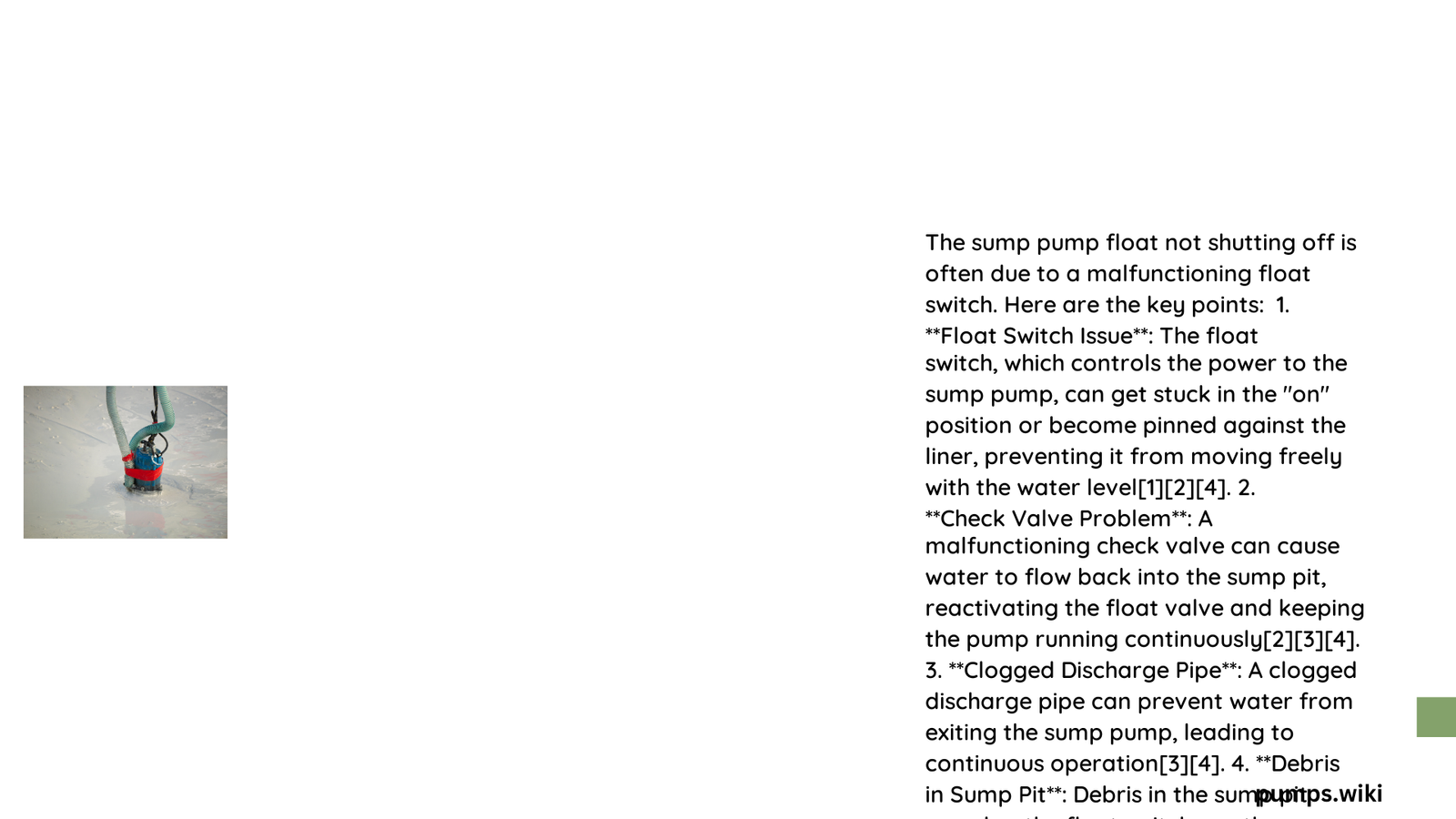A sump pump float that continuously runs can signal serious underlying mechanical or structural issues in your drainage system. When the float switch fails to deactivate, it leads to excessive energy consumption, potential pump burnout, and increased risk of basement flooding. Understanding the root causes and implementing targeted solutions is crucial for maintaining an effective water management system.
What Causes Sump Pump Float to Malfunction?
Why Does the Float Switch Get Stuck?
Float switches can become non-functional due to several critical reasons:
- Physical Obstructions
- Debris accumulation in sump pit
- Tangled electrical cords
-
Mechanical wear and tear
-
Mechanical Limitations
- Incorrect float switch positioning
- Damaged internal components
- Improper installation
How to Diagnose Float Switch Problems?
Visual Inspection Techniques
| Inspection Area | What to Check | Potential Issues |
|---|---|---|
| Float Movement | Free vertical motion | Restricted movement |
| Electrical Connections | Secure and clean | Corrosion or loose wiring |
| Physical Condition | No visible damage | Cracks or deformation |
What Are the Primary Troubleshooting Steps?
Comprehensive Diagnostic Process
- Power Disconnection
- Unplug sump pump
-
Ensure complete electrical isolation
-
Detailed Float Switch Examination
- Check for physical obstructions
- Test manual movement
-
Verify switch responsiveness
-
Discharge System Evaluation
- Inspect check valve functionality
- Clear potential pipe blockages
- Verify proper water drainage
How to Replace a Faulty Float Switch?
Replacement Procedure
- Required Tools
- Screwdriver
- Replacement float switch
- Plastic cable ties
-
Multimeter (optional)
-
Step-by-Step Replacement
- Disconnect power source
- Remove existing float switch
- Install new switch
- Secure with cable ties
- Test functionality
What Preventive Measures Can Be Taken?
Long-Term Maintenance Strategies
- Regular pit cleaning
- Annual professional inspection
- Upgrade to advanced float switch models
- Monitor water table fluctuations
- Ensure proper pump sizing
Technical Considerations for Float Switch Performance
Critical Performance Parameters
- Activation Range: 6-12 inches water level variation
- Switch Sensitivity: Precise on/off mechanism
- Material Durability: Corrosion-resistant components
When to Seek Professional Help?
Warning Signs Requiring Expert Intervention
- Persistent pump cycling
- Unusual noise during operation
- Visible electrical damage
- Recurring float switch failures
Conclusion

Addressing sump pump float issues requires systematic diagnosis, targeted interventions, and proactive maintenance. By understanding potential failure mechanisms and implementing strategic solutions, homeowners can prevent costly water damage and ensure reliable basement drainage.
Cost Considerations
- Float switch replacement: $20-$100
- Professional inspection: $100-$300
- Complete sump pump system upgrade: $500-$1,500
Technical Specifications Matter
Selecting the right float switch involves considering:
– Pump compatibility
– Water volume
– Electrical specifications
– Environmental conditions
Final Recommendations
- Perform quarterly inspections
- Maintain clean sump pit
- Replace worn components promptly
- Consider professional assessment annually
